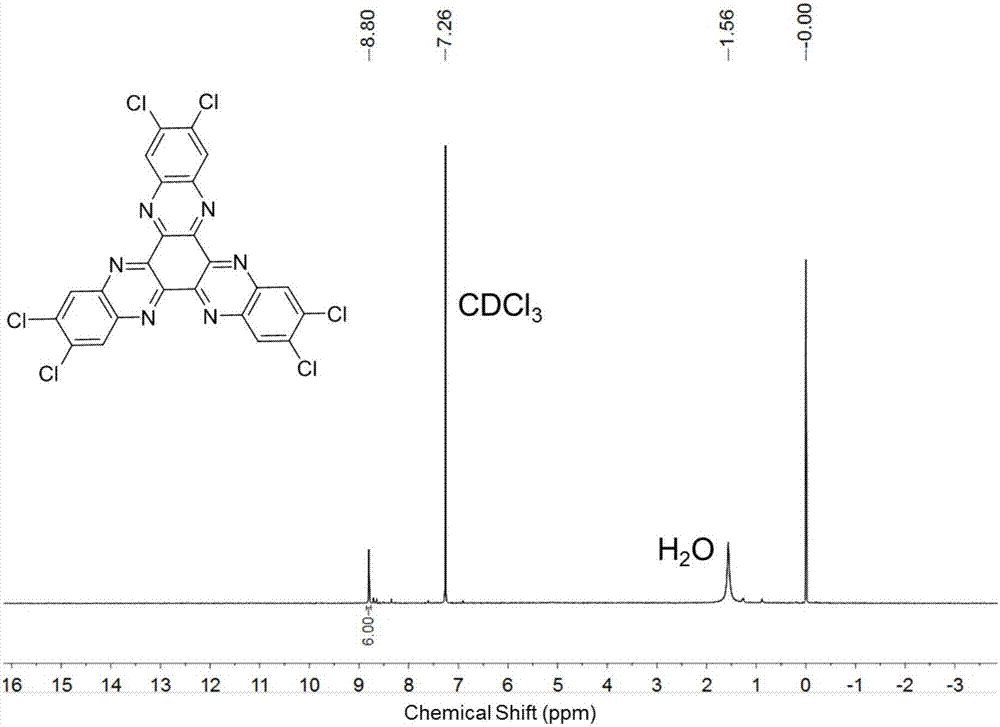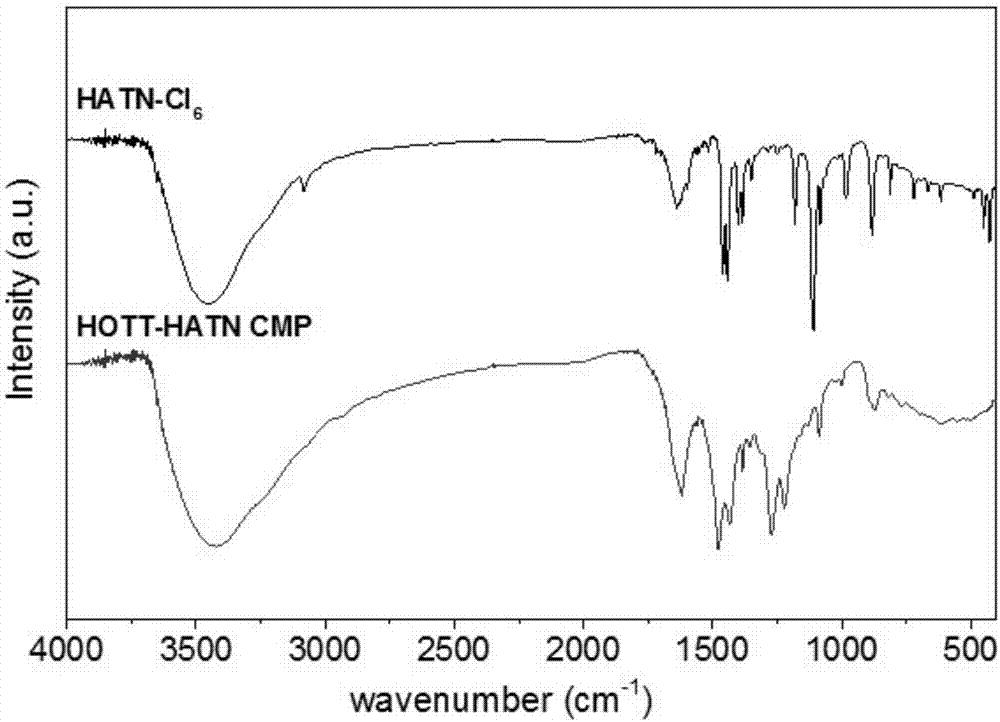Nanometer organic microporous polymer and method for adsorbing heavy metal in drinking water
A microporous polymer, nano-organic technology, applied in chemical instruments and methods, adsorption of water/sewage treatment, water pollutants, etc. problems, to achieve the effect of simple optimization of the preparation process, diverse functions, and high chemical stability
- Summary
- Abstract
- Description
- Claims
- Application Information
AI Technical Summary
Problems solved by technology
Method used
Image
Examples
Embodiment 1
[0034] The synthesis of embodiment 1 nanometer organic microporous polymer HOTT-HATN
[0035] 1. Add cyclohexanone octahydrate (529mg, 1.69mmol), 4,5-dichloro-1,2-phenylenediamine (900mg, 5.08mmol) and a magnetic stirring bar into a 25ml double-neck round bottom including a condenser The flask was placed on a magnetic stirrer, then evacuated and filled with nitrogen, and repeated 3 times.
[0036] 2. Transfer 12 mL of glacial acetic acid, which was previously bubbled with nitrogen for 5 min, into the flask through a vacuum tube under nitrogen.
[0037] 3. After reflux at 140° C. for 24 h under nitrogen, the reaction liquid was filtered and washed with 20 mL of hot glacial acetic acid to obtain the first intermediate product in the form of solid.
[0038] 4. Mix the first intermediate product with 15mL 30% nitric acid, then reflux at 140°C for 3h, filter the reaction solution, collect the solid, wash with 10mL deionized water and ethanol, and dry in vacuum to obtain the second...
Embodiment 2
[0046] The lead adsorption kinetics of embodiment 2 organic microporous polymer HOTT-HATN
PUM
 Login to View More
Login to View More Abstract
Description
Claims
Application Information
 Login to View More
Login to View More - R&D
- Intellectual Property
- Life Sciences
- Materials
- Tech Scout
- Unparalleled Data Quality
- Higher Quality Content
- 60% Fewer Hallucinations
Browse by: Latest US Patents, China's latest patents, Technical Efficacy Thesaurus, Application Domain, Technology Topic, Popular Technical Reports.
© 2025 PatSnap. All rights reserved.Legal|Privacy policy|Modern Slavery Act Transparency Statement|Sitemap|About US| Contact US: help@patsnap.com



